Estonian American Eva Ensmann recalls her study year at the University of Tartu in 1992-1993, just a year after Estonia had regained its independence. How the times have changed since then.
I am a foreign Estonian, born and raised in New York City, who came to study for a year at the University of Tartu in 1992, just one year after Estonia had regained its independence.
I had just finished my undergraduate degree in the US and was in the first class of foreigners studying Estonian at the university. Everything was new and we all were learning as we went along.
The old rules of the Soviet system didn’t apply anymore and the new ones were in the process of being invented. We were in the wild, wild east and as we crossed this uncharted territory we tried to enjoy every minute of it. What follows are some remembrances from that year.
Narva maantee 25
The foreigners were all given dorm rooms at 25 Narva Road on the third floor. You could find us behind the “turvauks” (security door) and ours was the only floor that had one. I don’t know if they were trying to protect us from the locals or just keep us isolated.
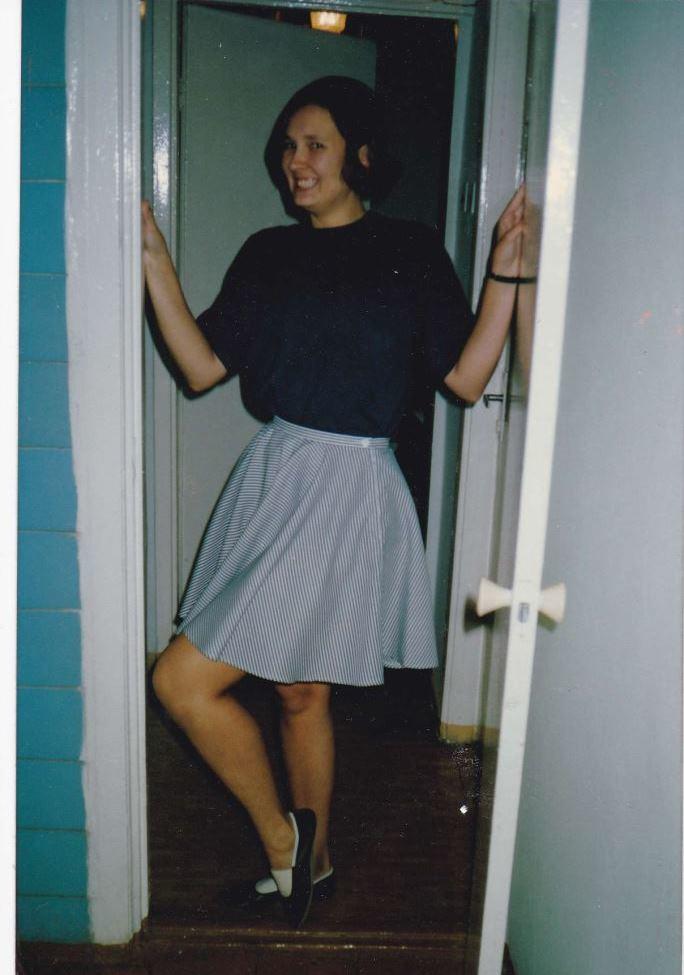
The floor housed the western foreigners as well as one or two people from other former Soviet republics, but as they lived at other end of the corridor and seemed to be long-term tenants, we didn’t interact with them. Our group was made up of Americans, Brits, Swedes, and Finns. Four of us were foreign Estonians and the rest had come to Tartu for a whole host of reasons.
We had a common kitchen and common sitting area near the door where our impromptu parties would often occur. The only differences that I could distinguish between our floor and the others at the dorm – besides the security door – were that we were only two per room, whereas the local Estonians dwelled four per room, and we had a few working light bulbs in the hallway.
There was a toilet and shower shared between two rooms but unfortunately there was no hot water. As autumn deepened into winter, I remember taking showers and the water was so cold that I would get a headache. Needless to say, since showering was far from a pleasurable experience, we adapted to the local custom of not showering all too often. Sauna took on a new meaning for most of us.
Back then the toilet paper that existed was pink and akin to crepe paper. It felt like sandpaper and was non-absorbent. Still, it was precious and as the supply in the stores began to diminish, you would buy as much as you could if you came across it, and return to the dorm a hero.
Despite ever more urgent searches, at some point in time, there was simply no more toilet paper to be found in the stores. People resorted to using the printed word (newspaper, magazines) and cutting it into squares to use as toilet paper. Eventually, you were lucky to find even that in a cubicle. It was always best to bring your own and those of us lucky enough to have outside connections begged for care packages containing toilet paper.

No heat in Tartu
A very noticeable effect of the journey into uncharted territory was that during that winter there was no heat from the main city heating station, so we sat in our classes in the cold.
We went to class and kept on all of our outerwear which was quite a sight to see. Never before had I been able to breathe out air and watch it condense inside a classroom.
It is difficult to focus on learning while shivering fiercely and I for one never again took for granted heat in the classroom or living quarters. The lucky ones lived in houses with wood or briquette heating systems.
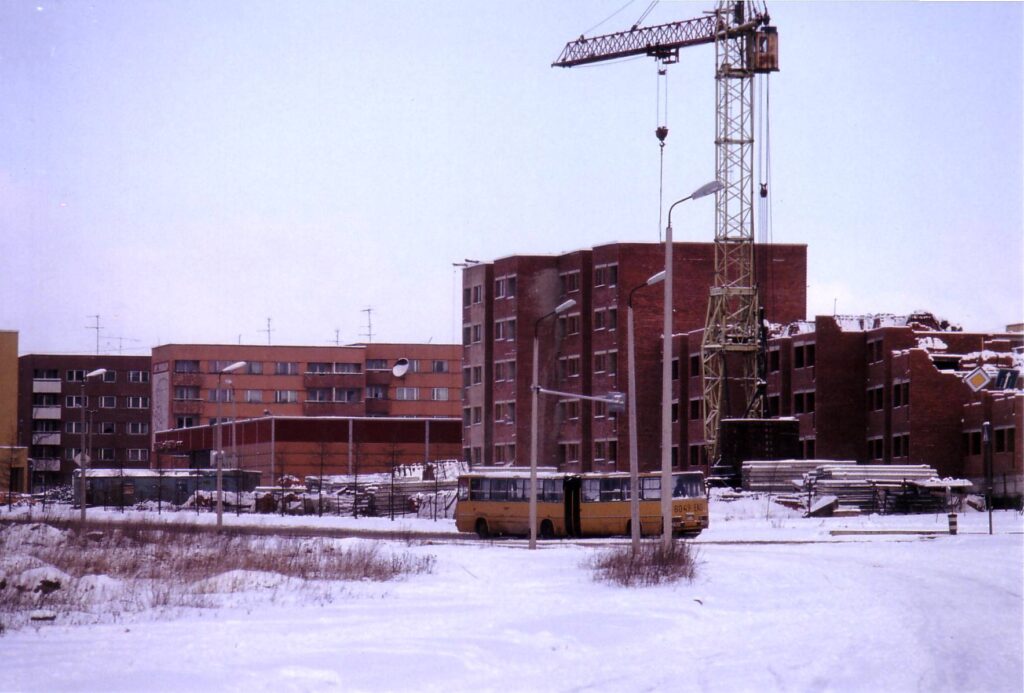
Communications
Mail at the time between Estonia and the US took three-four months one way. But during the year, the new Estonian government worked on improving international mail and the time delay was being reduced. Faxes were just starting to be introduced.
There were no mobile phones, no phone in the dorm and very few people had private landlines at their home. There were some public phone booths, but those were only good for calls within Estonia.
If you wanted to make an international call, you had to go to a telephone centre, one of which was located at the intersection of Lai and Rüütli street. You would fill out a form with the phone number you wanted to talk to and were given a queue number. Then you would wait for your number to be called and run to the corresponding booth for your call to be connected. Waiting was a good time to get studying done.
Since immediate communications were so hampered, life ended up much more spontaneous. If you were walking along, you might pass by a friend’s house and ring the doorbell to see if they were in. If enough people would happen to do this, it might end up becoming an impromptu party or gathering. It was always good to keep supplies on hand since you never knew when you might be having visitors.
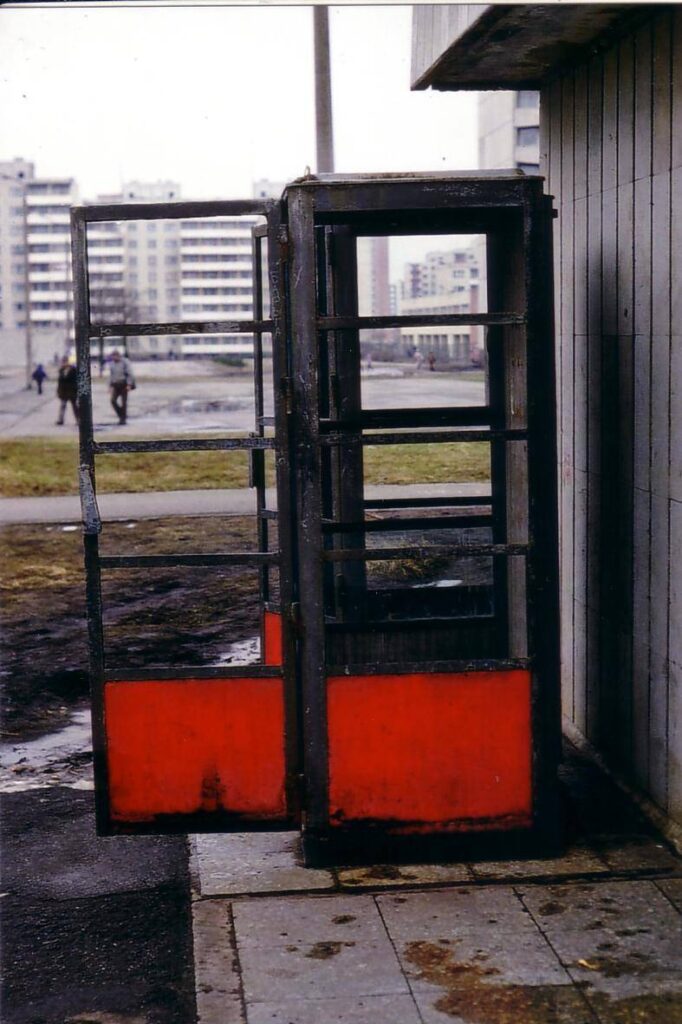
Calculators were few and far between in stores. It was much more common for a store clerk to use an abacus (a counting frame).
One of my memories is being at a store and asking the clerk what my total was. I had difficulty understanding her and asked for her to repeat the answer. Instead she just raised the abacus and pointed to it. She had no idea that I was an idiot who had never used an abacus in my life and was astounded that they were still in use somewhere in the world.
Limited fruits and vegetables
As autumn slid into winter, so did our eating options. Fresh fruits and vegetables disappeared from the market and then from the food stores.
The daily specials also changed to reflect what was still available: potatoes, cabbage, beet, turnips, carrots and onion. This hit me particularly hard since I was a vegetarian when I first arrived, but Estonia cured me of that. I was spoiled by US markets that had everything year round, but in Tartu that winter it became “eat or slowly wither away”. Meat was in plentiful supply.
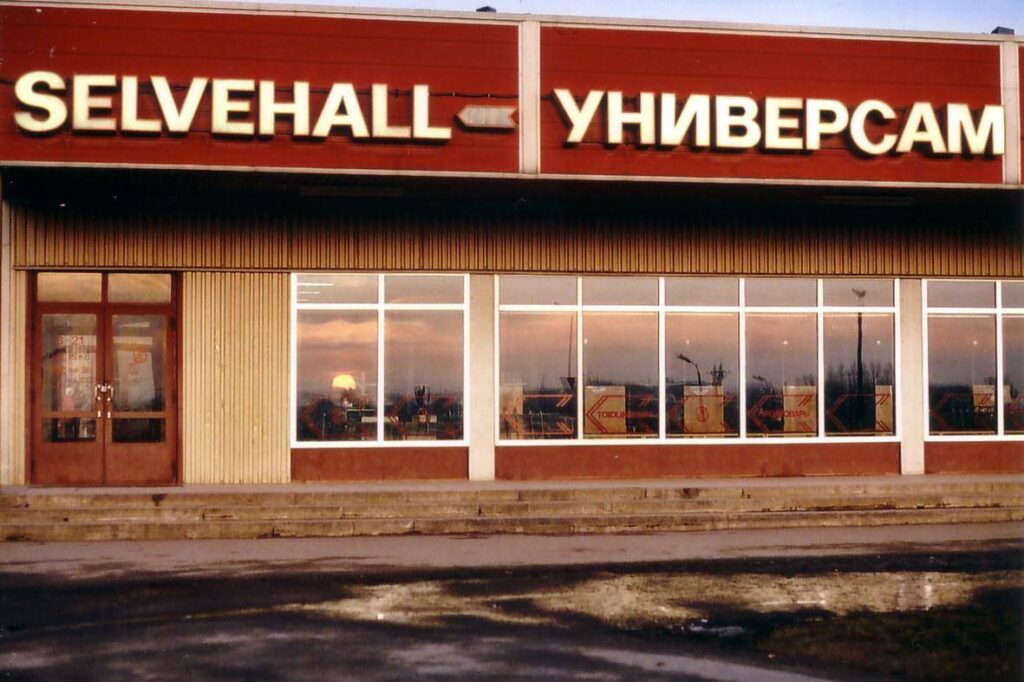
Everything in Estonia was dirt-cheap for us foreigners and we lived like kings and queens. If it was in the stores or restaurants, then we could easily afford to buy it. A general truth about students everywhere is that they are poor. So it was quite the contrast to be living somewhere and feel like you were rich. Most of us took advantage of our new buying power leverage.
Of course, the one problem was that there weren’t any goods or commodities to buy at the time, so our focus quickly became food and drink. After all, how else were we supposed to get through the long hard cold winter? By the end of that year, I had gained 15 pounds (one stone, 7 kilograms) and came back to the US weighing the most I had ever weighed in my life. We were living high on the hog (literally) and the change of diet (from vegetarian to omnivore) did little to help.
Feminist
The word “feminist” in Estonian is a bad word and in 1992 it was really bad. It came as some surprise that as an international student at the University of Tartu, I was called a feminist for the first time.
I had never really considered myself a feminist. My best friend from college was editor-in-chief of the university women’s magazine, played rugby, was the president of the local National Organisation for Women chapter and minored in women’s studies. She was a feminist. I identified as an environmentalist, but by being a free-thinking American woman, I earned the label of feminist in Estonia.
Gender roles were very retro; it was as if I had stepped back in time to 1950s America. For example, when you entered the Humal diner, men went to the right to the beer hall and women went to the left where there was a café. At that time, no proper Estonian woman would drink beer and especially would not do so in public. Everyone was quite shocked when my sister and I went into the right, sat down and ordered beers. I don’t remember it being readily apparent to us that we were doing anything wrong. It took a while to notice that we were the only females in there.
When our waiter brought us our beers, he asked if we were from Finland. We replied no and then it became a bit of a game to guess where we were from (clearly not from Estonia). It was eye-opening and interesting to be considered a rebel for just doing something that was considered normal back home. During our subsequent visits to Humal, when they tried to show us to the café side, I would just smile and keep walking to the beer hall.

These stereotyped gender roles still exist today in Estonia, 21 years later. In my children’s local Estonian schools, special subjects are still divided into male and female subjects. The girls are taught handicrafts and sewing while the boys are given classes in wood shop and metal working. It is amazing to me that in this day and age in a society that is so digitally savvy, that there is still sex-segregated curriculum. Perhaps I have turned into a feminist.
Another eye-opener for me back in 1992 was a stand selling porn magazines without any attempt to conceal the covers. While the stand was selling other magazines as well, I was still shocked, particularly since it was located immediately inside the university’s main building. Not only is the building the symbol of the university, but numerous classes were held there.
I thought that my fellow female students would also be displeased by female naked bodies being objectified in an institution that is for higher learning, but the Estonian women seemed to take no notice and did not consider it offensive in the least. Porn magazines were new and considered to be simply another expression of one of their new found freedoms of independence. They wanted to take full advantage of it.
Drinking and parties
We had a lot of parties in our dorm on the third floor.
At the time there was something called “taksoviin” (taxi vodka). If all the stores which sold alcohol were closed, one could always ask their taxi driver if he had some “taksoviin” for sale. In most cases, the answer was “yes”. While more expensive than what you could buy it for in the store, if you were desperate enough to continue the party, then it was well worth the asking price.
But it wasn’t all parties – my sister and I also spent many hours in the library as well. When one of us was talking to our mother and the other one was not present and she would ask, “Where is your sister?”, our typical response was that she was in the library. My mother was no doubt wondering when did we become so studious as to be in the library so much.
It wasn’t until she visited us towards the end of our year that she then fully understood. Inside the library was a full on bar. So one could bring in your library books and have a drink at the same time. Why don’t we have this in the US? The only problem was that you would often run into friends while there and your studying got waylaid.

Tartu’s wild, wild east treated me very well and I had an amazing year. I am so thankful that I had the opportunity to study at the University of Tartu when I did. Many of the friends I made that year are still dear friends all these decades later.
While many things have changed at the university and in Tartu, the fundamental essence of both has remained the same. The university is still full of fabulous professors and researchers and the education one receives is top notch. Tartu is vibrant, young and filled with intellectuals and retains its charm as a “väike puust linn” (small wooden city). These characteristics draw people from around the world, which once experienced, almost inevitably draws you back for good; or at least for another visit.
This is an edited version of the article first published by the University of Tartu blog.

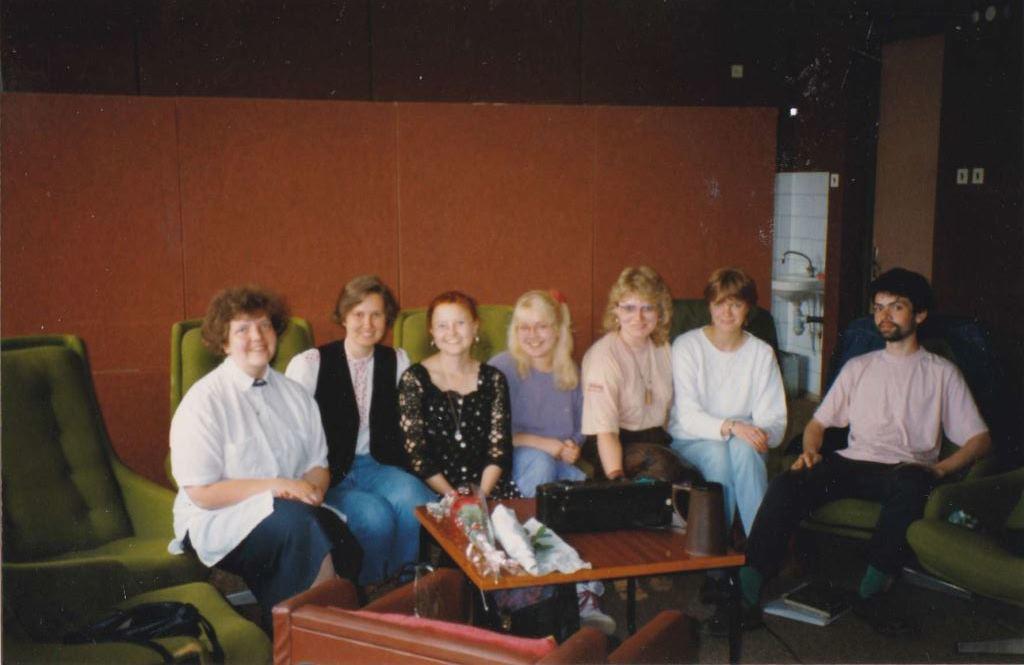
Great article….love to see how things have changed
Small correction – you can’t have been quite the first class of foreigners studying Estonian at the University of Tartu, as I also lived on the third floor of Narva mnt 25, from 1991-1992 🙂
Sorry, I was given misinformation. I knew that one of the students in our group (Marja-Leena) had gotten to Tartu already in the Spring. But I didn’t realize that there were other foreigners already formally studying Estonian there. How many of you were there? When did you leave? Did we overlap?
No problem 🙂 When I came to Tartu there were already some Finnish students there. There was also an American on our floor, as well as a Polish girl and a Hungarian girl. I think most of our group were just there for the year. I left in 1992 but then returned in 1994 and ‘stayed on’. It was a crazy time indeed, lots of fun 🙂
Nice stories, Eva! You got to experience Estonian life at a very special time.
That looks like Saku (Sakari or Sakkari) playing the guitar there.
Greetings from Middle Georgia
Jerry